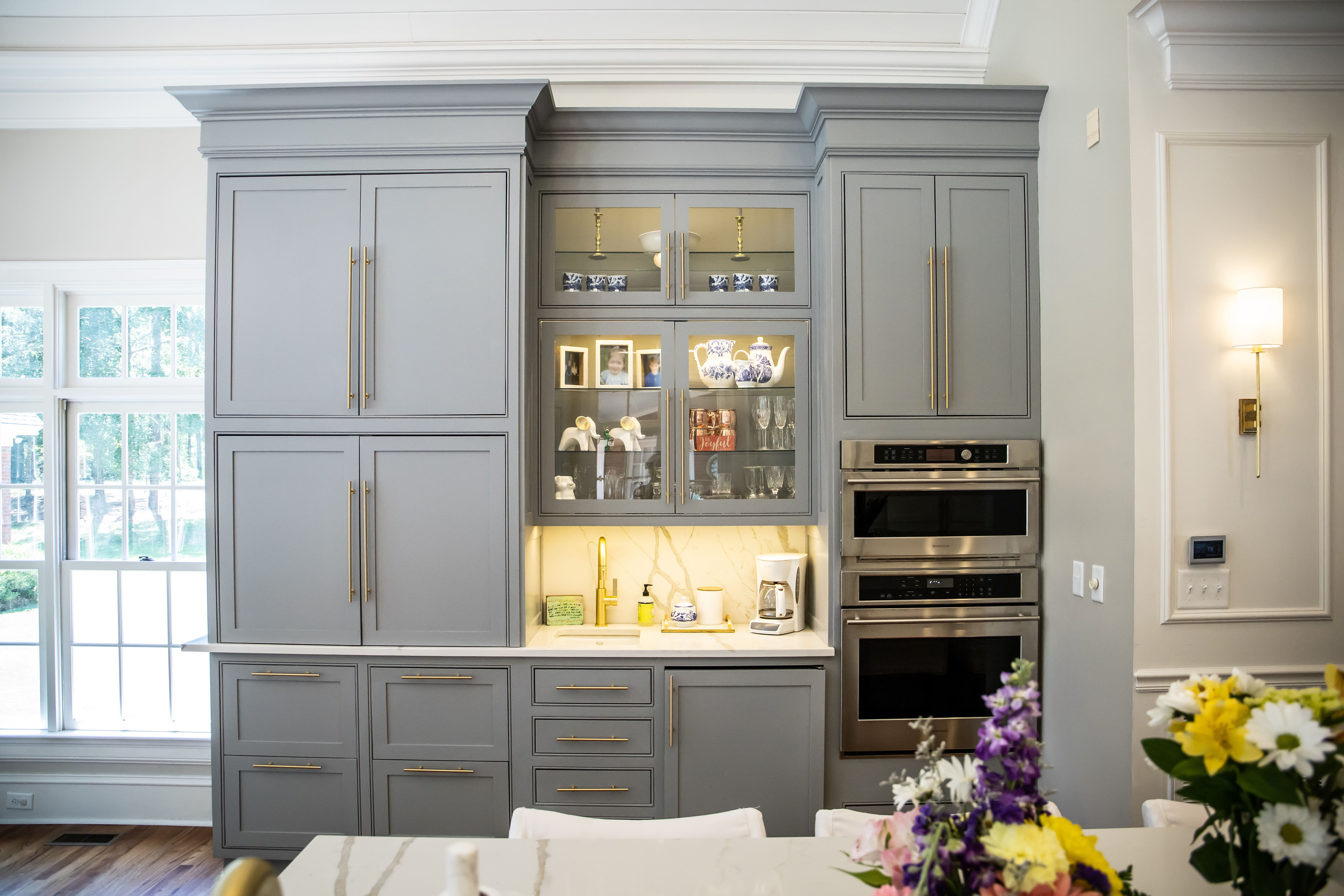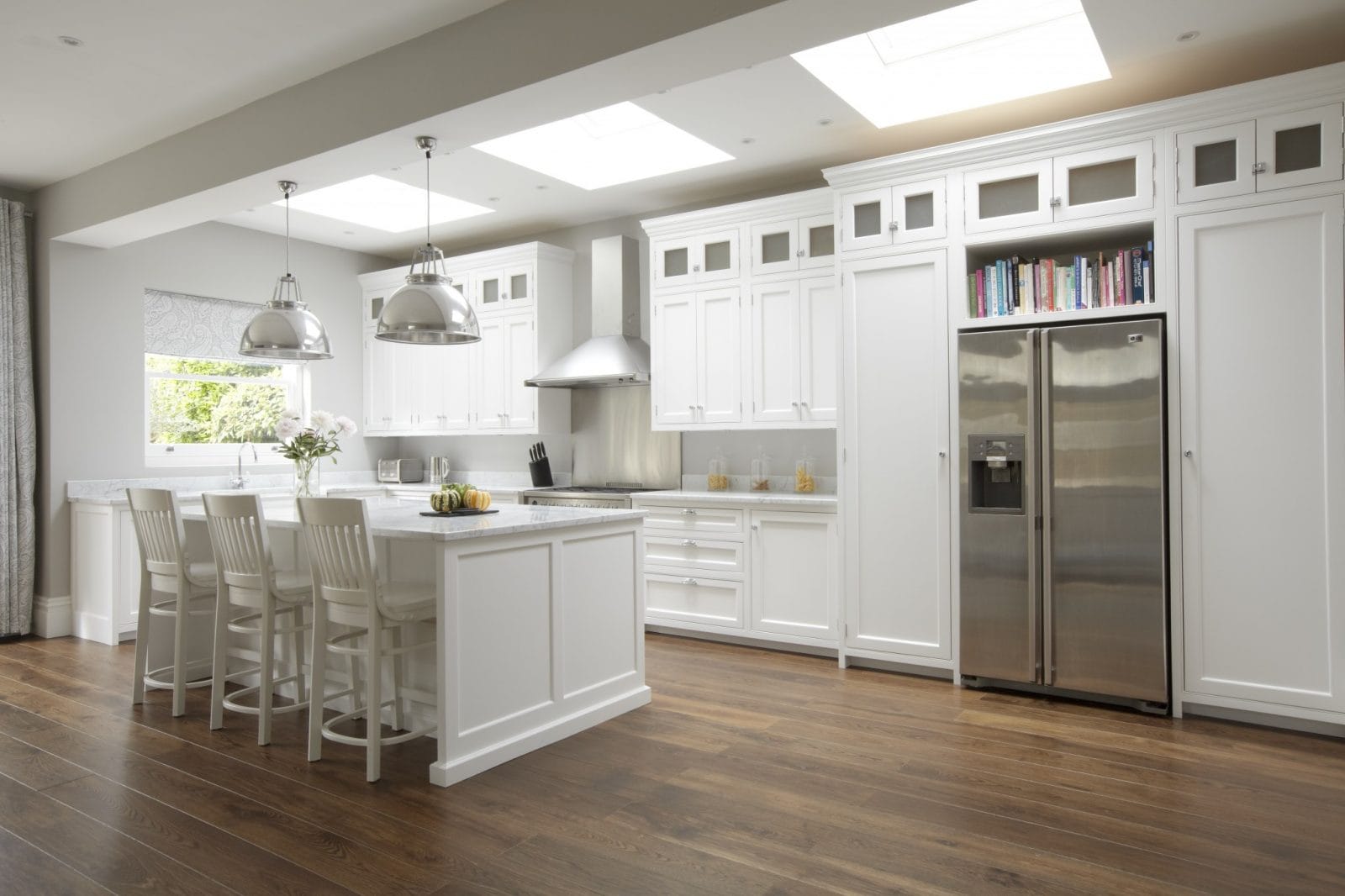Styles and Trends in American Classic Kitchen Cabinet Doors

American classic kitchen cabinet door styles have undergone a significant evolution over the past century, reflecting broader shifts in architectural and interior design trends. Early 20th-century kitchens often featured simpler, more utilitarian designs, while later decades saw a rise in more ornate and elaborate styles. This evolution is mirrored in the materials used, the craftsmanship employed, and the overall aesthetic preferences of the time.
Evolution of American Classic Kitchen Cabinet Door Styles
The early to mid-20th century saw a prevalence of simple, functional designs. Plain-faced doors, often made of inexpensive woods like pine, were common. The focus was on practicality and durability rather than elaborate ornamentation. The post-World War II era brought about a surge in suburban development and a corresponding increase in demand for more stylish kitchens. This led to the emergence of more decorative styles, incorporating elements like raised panels, intricate carvings, and more diverse wood choices. The mid-century modern movement introduced cleaner lines and a minimalist aesthetic, while the latter half of the 20th century saw a revival of traditional styles, often incorporating more elaborate detailing. The late 20th and early 21st centuries have seen a blend of traditional and contemporary elements, with a strong emphasis on customization and personalization.
Comparison of Shaker, Raised Panel, and Flat Panel Door Styles
Shaker, raised panel, and flat panel doors represent three distinct styles with unique characteristics. Shaker doors are characterized by their simple, flat-fronted design with recessed panels, often featuring a subtle frame. This minimalist aesthetic lends itself to a clean, uncluttered look suitable for contemporary and transitional kitchens. Raised panel doors, conversely, feature a raised central panel framed by a recessed border. This creates a more traditional and formal look, often associated with classic or craftsman-style kitchens. The raised panel adds depth and visual interest. Flat panel doors, as the name suggests, have a completely flat surface with no raised or recessed elements. This style is extremely versatile, capable of fitting into both modern and traditional settings, depending on the chosen material and finish. The choice between these styles depends largely on the overall design aesthetic of the kitchen.
Current Trends in American Classic Kitchen Cabinet Door Materials, Finishes, and Hardware
Current trends reflect a desire for both timeless elegance and contemporary functionality. A wide array of materials, finishes, and hardware options allows for extensive customization.
| Wood Type | Finish | Hardware Style | Suitable Kitchen Style |
|---|---|---|---|
| Oak | Stained (various tones) | Brushed nickel, oil-rubbed bronze | Traditional, Transitional |
| Cherry | Stained (warm tones), painted (white, cream) | Polished nickel, antique brass | Traditional, Farmhouse |
| Maple | Painted (various colors), stained (light tones) | Modern minimalist, sleek black | Contemporary, Transitional |
| White Painted | High-gloss, matte | Matte black, brushed gold | Contemporary, Farmhouse |
Manufacturing and Customization Options for American Classic Kitchen Cabinet Doors

American classic kitchen cabinet doors represent a blend of timeless design and modern manufacturing techniques. Their production involves a sophisticated process, from careful material selection to meticulous finishing, allowing for extensive customization to suit individual homeowner preferences and kitchen aesthetics. Understanding this process enables informed decision-making during kitchen renovations.
The creation of American classic kitchen cabinet doors typically begins with the selection of raw materials. Common choices include various hardwood species such as oak, maple, cherry, and hickory, known for their durability and aesthetic appeal. These woods undergo a milling process, where they are cut and shaped to the desired dimensions for the cabinet door frames and panels. Different joinery techniques, such as mortise and tenon or dowel joining, are employed to assemble the frames. Panel inserts, often crafted from the same wood or a contrasting species, are then fitted into the frames. Following assembly, the doors undergo surface preparation, including sanding to achieve a smooth finish. This is followed by the application of paint, stain, or varnish, depending on the desired aesthetic. The final step involves the installation of hinges and other hardware.
Customization Options for American Classic Kitchen Cabinet Doors
Homeowners have considerable latitude in customizing their American classic kitchen cabinet doors to match their unique style and kitchen design. The available options significantly impact the final look and feel of the space. Careful consideration of these choices is crucial for achieving a cohesive and aesthetically pleasing kitchen.
Numerous customization options are available to tailor the look and feel of American classic kitchen cabinet doors to individual preferences. These choices extend beyond mere aesthetics, influencing the durability and longevity of the cabinets.
- Wood Species: Oak, maple, cherry, hickory, and other hardwoods offer distinct grain patterns, colors, and durability levels. Oak, for example, provides a robust and traditional look, while maple offers a cleaner, more contemporary aesthetic. Cherry’s rich tones add warmth, while hickory boasts a distinctive rugged texture.
- Paint Colors: A wide spectrum of paint colors allows for personalization, ranging from classic whites and creams to bold hues and custom blends. Color selection should consider the overall kitchen design and the desired mood, whether it be bright and airy or warm and inviting. The choice of paint finish (matte, semi-gloss, or high-gloss) also impacts the final look.
- Hardware Choices: Knobs, pulls, and hinges are available in various styles, materials (brass, nickel, chrome), and finishes. Hardware selection complements the cabinet door style and contributes significantly to the overall kitchen design. For instance, ornate brass hardware might suit a traditional design, while sleek, minimalist handles complement a modern aesthetic.
- Door Panel Styles: Different panel styles, such as raised panel, flat panel, shaker, and beaded inset, influence the visual character of the cabinet doors. Raised panel doors offer a classic, traditional feel, while shaker-style doors provide a clean, simple look. Flat panel doors create a more modern and minimalist aesthetic.
Hypothetical Kitchen Renovation Project: Cabinet Door Selection
Consider a kitchen renovation project aiming for a transitional style—a blend of traditional and modern elements. The kitchen features a neutral color palette with white subway tile backsplash and light grey countertops. The overall design aims for a clean, airy, yet warm and inviting atmosphere.
For this project, the homeowner opts for maple wood for its durability and lighter color, complementing the kitchen’s bright aesthetic. A shaker-style door is chosen for its clean lines and timeless appeal, fitting the transitional style. The doors are painted in a soft, off-white color with a semi-gloss finish for easy cleaning and subtle sheen. Brushed nickel hardware provides a modern touch without clashing with the traditional elements. This combination results in a cohesive and visually appealing kitchen that balances functionality and style.
Care and Maintenance of American Classic Kitchen Cabinet Doors

Proper care and maintenance are crucial for extending the lifespan and preserving the aesthetic appeal of American classic kitchen cabinet doors. Regular cleaning and timely repairs can prevent significant damage and maintain the value of your cabinetry. The specific care required will vary depending on the material and finish of the doors.
Cleaning and Maintenance of Various Cabinet Door Materials, American classic kitchen cabinet doors
The longevity and appearance of your classic kitchen cabinets depend heavily on consistent cleaning and maintenance tailored to their material. Ignoring this can lead to premature wear and tear.
- Wood Doors: Dust regularly with a soft cloth or microfiber duster. For deeper cleaning, use a damp (not wet) cloth with a mild, wood-friendly cleaner. Avoid harsh chemicals or abrasive cleaners. Condition wood doors periodically with a suitable wood conditioner to prevent dryness and cracking. Regularly inspect for signs of woodworm infestation and treat immediately if found.
- Painted Doors: Wipe down regularly with a damp cloth and mild dish soap. Avoid abrasive scrubbers that could scratch the paint. For tougher stains, use a non-abrasive cleaner specifically designed for painted surfaces. Touch up minor scratches or chips promptly with paint that matches the original finish.
- Laminate Doors: Laminate is relatively low-maintenance. Wipe clean with a damp cloth and mild detergent. Avoid harsh chemicals and abrasive cleaners that could damage the laminate surface. Pay attention to edges and corners, as these areas can chip more easily.
- Hardware Cleaning: Regularly clean cabinet knobs, pulls, and hinges with a damp cloth and mild soap. For tarnished metal hardware, consider using a metal polish appropriate for the specific metal type (brass, chrome, nickel, etc.). Tighten loose screws periodically to prevent rattling or damage.
Common Problems and Solutions
Several issues commonly affect American classic kitchen cabinet doors. Addressing them promptly can prevent further damage and maintain the cabinets’ functionality and aesthetics.
- Scratches: Minor scratches on wood doors can often be concealed with wood filler and re-staining or repainting. Deeper scratches might require professional repair or replacement. Scratches on painted surfaces can sometimes be buffed out with fine-grit sandpaper and repainted.
- Dents: Small dents in wood doors may be able to be gently coaxed out using a damp cloth and heat from a hairdryer (applied carefully to avoid burning the finish). Larger dents may require professional repair or replacement. Dents in painted surfaces are more difficult to repair and often require repainting.
- Loose Hinges: Tighten loose hinge screws periodically. If screws are stripped, use wood glue to fill the holes and allow it to dry before inserting slightly larger screws. For severely damaged hinges, replacement is necessary.
- Swelling: Swelling in wood doors is often caused by excessive moisture. Reduce humidity levels in the kitchen and allow the wood to dry naturally. Severe swelling might require professional intervention.
Refinishing or Repainting American Classic Kitchen Cabinet Doors
Refinishing or repainting cabinet doors can significantly refresh their appearance and extend their lifespan. This process requires careful preparation and execution.
- Preparation: Remove the doors from the cabinets. Clean the doors thoroughly to remove grease, dirt, and old finish. Lightly sand the surfaces to create a smooth base for the new finish. Fill any holes or imperfections with wood filler and allow it to dry completely. Sand the filler smooth.
- Priming (if necessary): If repainting, apply a primer appropriate for the type of paint you will be using. Allow the primer to dry completely according to the manufacturer’s instructions.
- Painting or Staining: Apply the paint or stain in thin, even coats, allowing each coat to dry completely before applying the next. Use high-quality brushes or spray equipment for a professional finish. Multiple thin coats are preferable to one thick coat.
- Finishing: Apply a clear topcoat (polyurethane or varnish) to protect the new finish. Allow the topcoat to dry completely before reinstalling the doors.
- Safety Precautions: Work in a well-ventilated area. Wear appropriate safety gear, including gloves, eye protection, and a respirator when working with paints, stains, and solvents. Follow all manufacturer’s instructions for the products you are using.
